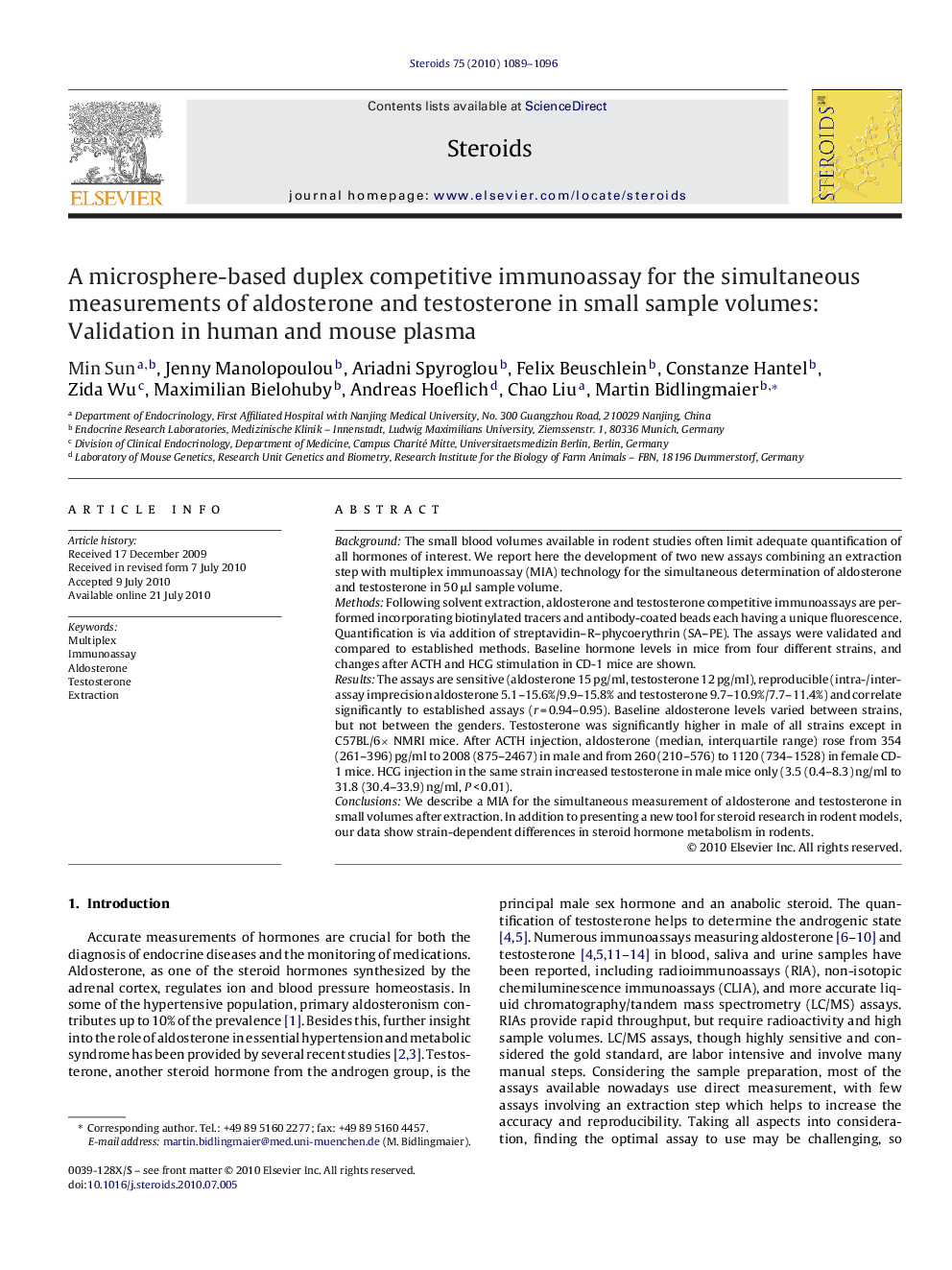| Article ID | Journal | Published Year | Pages | File Type |
|---|---|---|---|---|
| 2028353 | Steroids | 2010 | 8 Pages |
BackgroundThe small blood volumes available in rodent studies often limit adequate quantification of all hormones of interest. We report here the development of two new assays combining an extraction step with multiplex immunoassay (MIA) technology for the simultaneous determination of aldosterone and testosterone in 50 μl sample volume.MethodsFollowing solvent extraction, aldosterone and testosterone competitive immunoassays are performed incorporating biotinylated tracers and antibody-coated beads each having a unique fluorescence. Quantification is via addition of streptavidin–R–phycoerythrin (SA–PE). The assays were validated and compared to established methods. Baseline hormone levels in mice from four different strains, and changes after ACTH and HCG stimulation in CD-1 mice are shown.ResultsThe assays are sensitive (aldosterone 15 pg/ml, testosterone 12 pg/ml), reproducible (intra-/inter-assay imprecision aldosterone 5.1–15.6%/9.9–15.8% and testosterone 9.7–10.9%/7.7–11.4%) and correlate significantly to established assays (r = 0.94–0.95). Baseline aldosterone levels varied between strains, but not between the genders. Testosterone was significantly higher in male of all strains except in C57BL/6× NMRI mice. After ACTH injection, aldosterone (median, interquartile range) rose from 354 (261–396) pg/ml to 2008 (875–2467) in male and from 260 (210–576) to 1120 (734–1528) in female CD-1 mice. HCG injection in the same strain increased testosterone in male mice only (3.5 (0.4–8.3) ng/ml to 31.8 (30.4–33.9) ng/ml, P < 0.01).ConclusionsWe describe a MIA for the simultaneous measurement of aldosterone and testosterone in small volumes after extraction. In addition to presenting a new tool for steroid research in rodent models, our data show strain-dependent differences in steroid hormone metabolism in rodents.
Research highlights- New multiplex assay for simultaneous measurement of aldosterone and testosterone. - Validated in low volumes of human and mouse samples. - Applied in samples from pharmacological and physiological settings. - Significant differences in hormone levels between genders and strains observed.
